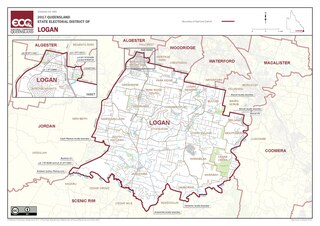
The People's Palace is a heritage-listed building and a former temperance hotel in the Brisbane CBD, City of Brisbane, Queensland, Australia. It is located at 308 Edward Street on the southern corner with Ann Street, diagonally opposite to Brisbane's Central Railway Station. It was designed by Colonel Saunders and built from 1910 to 1911. It was added to the Queensland Heritage Register on 21 October 1992.

The Bank of New South Wales Building is a heritage-listed former bank building located at 33 Queen Street, Brisbane City, City of Brisbane, Queensland, Australia. It was designed by Hall & Devereux and built from 1928 to 1930 by F J Corbett & Sons. It is also known as Westpac Bank Building. It was added to the Queensland Heritage Register on 21 October 1992.

The Masonic Temple is a heritage-listed masonic temple at 311 Ann Street, Brisbane City, City of Brisbane, Queensland, Australia. It was designed by Lange Leopold Powell of Atkinson, Powell and Conrad and wasbuilt from 1928 to 1930 by George Alexander Stronach & Son. It is also known as the Masonic Memorial Temple. It was added to the Queensland Heritage Register on 21 October 1992.
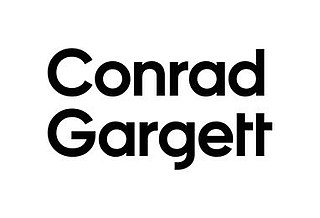
Conrad Gargett is an Australian architectural practice, founded in Brisbane in 1890 and is one of Queensland's oldest architectural firms.

Ithaca Fire Station is a heritage-listed fire station at 140 Enoggera Terrace, Paddington, Queensland, Australia. It was designed by station superintendent Alfred Joseph Harper and built in 1918-1919; an upper level was designed by Atkinson, Powell and Conrad and built by Frederick Enchelmaier in 1928. It was added to the Queensland Heritage Register on 2 March 1993.

Yeronga Fire Station is a heritage-listed former fire station at 785 Ipswich Road, Yeronga, City of Brisbane, Queensland, Australia. It was designed by architectural firm Atkinson and Conrad, and built in 1934 by contractor William Allen Miller. It is a two-storey timber structure adjacent to Yeronga Park, and originally housed the station facilities on the ground floor and a residence for the superintendent on the first floor, a combination typical for Brisbane fire stations of this era.
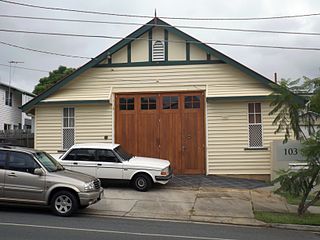
Balmoral Fire Station is a heritage-listed fire station at 105 Pashen Street, Morningside, Queensland, Australia. It was designed by architects Atkinson and Conrad and built from c. 1926 to 1929 by C. King. It was added to the Queensland Heritage Register on 26 November 1999.

St Paul's Anglican Church is a heritage-listed church and columbarium at 554 Vulture Street East, East Brisbane, City of Brisbane, Queensland, Australia. It was designed by Atkinson & Conrad and built in 1924 by J Hood. It was added to the Queensland Heritage Register on 7 February 2014.

Craigston is a heritage-listed apartment block at 217 Wickham Terrace, Spring Hill, City of Brisbane, Queensland, Australia. It was designed by Atkinson & Conrad and built in 1927. It was added to the Queensland Heritage Register on 21 October 1992.
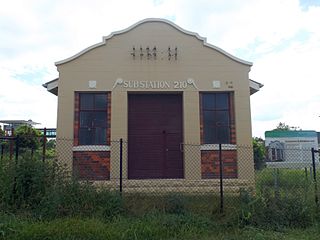
Coorparoo Substation No. 210 is a heritage-listed electrical substation at 12 Main Avenue, Coorparoo, City of Brisbane, Queensland, Australia. It was designed by Reyburn Jameson and built in 1930 by A. Mason. It is also known as Substation 10. It was added to the Queensland Heritage Register on 1 August 2005.

Coorparoo School of Arts and RSL Memorial Hall is a heritage-listed school of arts at 208 Cavendish Road, Coorparoo, City of Brisbane, Queensland, Australia. It was built from 1892 to 1953. It is also known as Coorparoo School of Arts and Coorparoo Shire Hall. It was added to the Queensland Heritage Register on 6 January 1999.

Queen Alexandra Home is a heritage-listed villa at 347 Old Cleveland Road, Coorparoo, City of Brisbane, Queensland, Australia. It was built from 1886 to 1963. It is also known as Alexandra House, College of Tourism & Hospitality, Hatherton, and Queen Alexandra Home for Children. It was added to the Queensland Heritage Register on 21 October 1992.
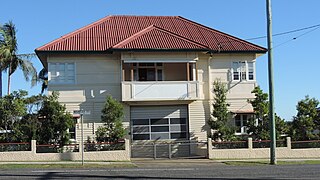
Wynnum Fire Station is a heritage-listed former fire station at 39 Mountjoy Terrace, Wynnum, City of Brisbane, Queensland, Australia. It was designed by Atkinson & Conrad and built from 1922 to 1938. It was added to the Queensland Heritage Register on 28 May 1999.
Henry Wallace Atkinson was an architect in Brisbane, Queensland, Australia. Many of his works are now heritage-listed.
Atkinson and Conrad was an architectural partnership in Brisbane, Queensland, Australia between Henry Wallace Atkinson and Arnold Henry Conrad. Many of their works are now heritage-listed.

Albion Fire Station is a heritage-listed former fire station at 42 Bridge Street, Wooloowin, City of Brisbane, Queensland, Australia. It was designed by Department of Public Works and built from 1925 to 1927. It was added to the Queensland Heritage Register on 28 February 2003.

Nundah Fire Station is a heritage-listed former fire station at 7 Union Street, Nundah, City of Brisbane, Queensland, Australia. It was designed by Atkinson & Conrad and built in 1936 by T F Woollam. It was added to the Queensland Heritage Register on 26 March 1999.

Bryntirion is a heritage-listed detached house at 287 Wickham Terrace, Spring Hill, City of Brisbane, Queensland, Australia. It was designed by James Furnival for Edward Barton Southerden and built in 1861 with subsequent extensions. It was added to the Queensland Heritage Register on 17 December 1993.







